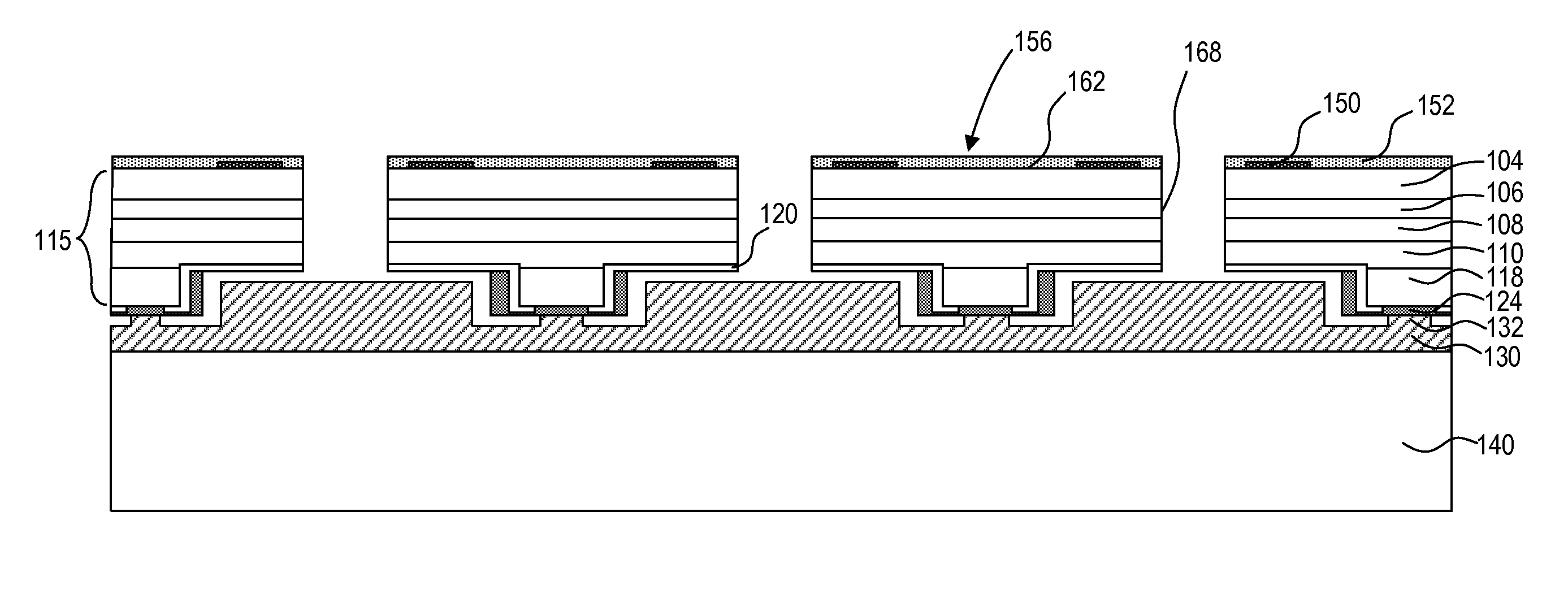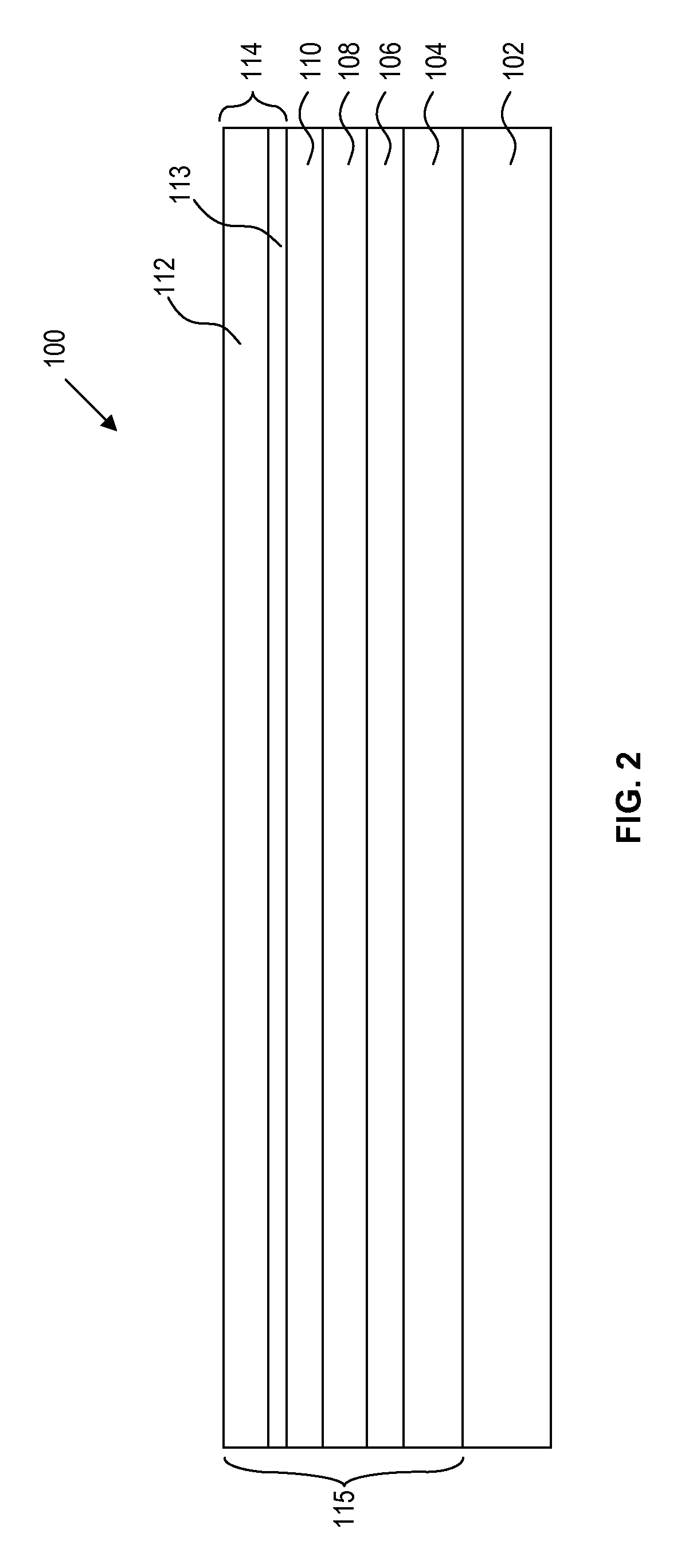Etch removal of current distribution layer for LED current confinement
a technology of led current confinement and current distribution layer, which is applied in the direction of semiconductor devices, semiconductor/solid-state device details, instruments, etc., can solve the problem of low efficiency
- Summary
- Abstract
- Description
- Claims
- Application Information
AI Technical Summary
Benefits of technology
Problems solved by technology
Method used
Image
Examples
example 1
[0090]In one embodiment, a display panel is a 5.5 inch full high definition display with 1920×1800 resolution, and 400 pixels per inch (PPI) including a 63.5 μm RGB pixel size. To achieve a 300 Nit output (white) with LED devices having a 10% EQE, the display panel uses approximately 10 nA-30 nA of current per LED, assuming one LED per subpixel. For an LED device with a 10 μm×10 μm confined current injection area this corresponds to a current density of 0.01 A / cm2-0.03 A / cm2. This is well below the normal or designed operating conditions for standard LEDs.
example 2
[0091]In an embodiment, the parameters of Example 1 are the same, with a smaller 1 μm×1 μm confined current injection area. With this reduced current injection area the corresponding current density increases to 1 A / cm2-3 A / cm2. Thus, Example 2 illustrates that at operating currents of 10 nA-30 nA, small changes in current injection area from 10 μm×10 μm to 1 μm×1 μm can have a significant effect on current density. In turn, the change in current density may affect efficiency of the LED device.
example 3
[0092]In one embodiment, a display panel is a 5.5 inch full high definition display with 1920×1800 resolution, and 400 pixels per inch (PPI) including a 63.5 μm RGB pixel size. Each subpixel includes an LED device with a 10 μm×10 μm confined current injection area. Luminance is maintained at 300 Nit output (white). In this example, it is desired to achieve a 40% EQE. With this increased efficiency, lower operating currents may be used. In an embodiment, an operating current of 3 nA-6 nA per LED is selected. With these parameters an LED device with a 10 μm×10 μm confined current injection area operates at 0.003 A / cm2-0.006 A / cm2, and an LED device with a 1 μm×1 μm confined current injection area operates at 0.3 A / cm2-0.6 A / cm2.
PUM
 Login to View More
Login to View More Abstract
Description
Claims
Application Information
 Login to View More
Login to View More - R&D
- Intellectual Property
- Life Sciences
- Materials
- Tech Scout
- Unparalleled Data Quality
- Higher Quality Content
- 60% Fewer Hallucinations
Browse by: Latest US Patents, China's latest patents, Technical Efficacy Thesaurus, Application Domain, Technology Topic, Popular Technical Reports.
© 2025 PatSnap. All rights reserved.Legal|Privacy policy|Modern Slavery Act Transparency Statement|Sitemap|About US| Contact US: help@patsnap.com



